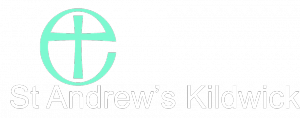The buildings
- The Church was founded in AD 950 and is a magnificent building dating from the 14th century. A church at Kildwick existed at the time of the Domesday Survey of 1086, but stone crosses of Scandinavian design were found built into in the Chancel wall indicating a much earlier building on the site. St Andrews Church Kildwick has evolved into its present form from the 13th Century.
- The Vicarage is a large house (built in 1905) set in pleasant secluded gardens very close to the church.
- The Parish Rooms are in a small, but well used building situated next to the churchyard. These were modernized and completely redecorated / furnished following extensive damage by a fire at Christmas 1998. They are the centres of church and community activities throughout the week.
- The Churchyard is very extensive with an ‘old’ and ‘new’ graveyard surrounding the church. The ‘old’ is closed’ and maintained by Craven Council and the ‘new’ is located north of the Leeds-Liverpool canal and the only burials allowed there are in existing graves. There is a memorial garden for the interment of cremated remains and the crematorium is in Skipton.
History of Kildwick Church (the bereton publication)
graveyard / stones
internal virtual tour with history
church recording publication


Leave a Reply
Want to join the discussion?Feel free to contribute!